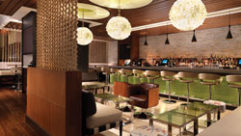
Security Watch: Combining Fire and Security Systems
Jul 1, 2005 12:00 PM,
By Steve Filippini
A few simple tips for installing successful systems for your clients.
Kits for combined fire and security systems may include most of the devices you need. Such kits, like this Vista 32FB system from Honeywell, usually include a control panel, sensing devices, alarm triggers, and smoke detectors.
I am currently employed as a security and fire alarm designer for a respectable Midwestern alarm company. I deal primarily with national accounts, which consist of businesses or chains that have several hundred branches or stores scattered across the country. Most of the systems I design have separate fire and security components. Each is made up of respective enclosures, wiring configurations, detection devices, and digital communicators.
Every now and then, I get a request from the customer to combine the fire and security systems. Reasons for the request vary. Some locations are very small (4,000 to 10,000 square feet) with fewer than 12 combined detection devices. Other locations are up in the 15,000- to 20,000-square-foot range. The fire and security systems in these sites are sometimes combined in an effort to make them more cost-effective. I’m not a big fan of combining fire and security systems, but my customers pay the bills so I comply.
Fire and security systems are different in several basic ways. Security system control panels are typically housed in gray enclosures and lead a quiet life. The cabling that travels from the point-of-protection devices back to the control panel is usually gray or white and may have a shielded wrap, depending on the application and environment. Security system keypads are white, off-white, brown, or beige in color, with buttons or user touch-pads for arming and disarming functions. Security systems will often beep or chime when a door or window is opened, and ring a bell or siren when an intruder is detected.
Fire alarm systems are housed in red enclosures. For the most part, the cabling, keypads, and indicating devices (horn, sirens, or strobes) are red. However, NFPA 72 will allow white cabling and indicating devices for those who want to maintain a certain level of décor. NFPA 72, by the way, is the National Fire Alarm Code created by the National Fire Protection Association. This code lays out the guidelines for how fire alarm systems must be designed and installed.
There are two types of combined fire and security systems: the combined system and the point-of-connection system. Each one has its own set of rules and configurations.
THE COMBINED SYSTEM
The combined system uses one control panel for both fire and security devices. The enclosure is red, the user keypads are red, the control panel has dual phone line capabilities, and fire detection initiating devices are given priority when multiple device activations occur. The system’s backup batteries need to support both fire and security devices during a power failure for at least 24 hours. Some jurisdictions may require 60 hours of battery backup if your monitoring center is listed as a remote central station.
Sixty hours of battery backup is difficult enough to provide for just fire devices. Adding motion detectors, glass-break detectors, and sirens to the mix increases the overall current draw and often exceeds the amount of available backup power needed to meet the requirements of the Authorities Having Jurisdiction (or AHJs).
I use the following process to determine how much power I need.
To determine how much battery backup is required by NFPA 72, you need to list all of the devices powered by the control panel and include their current consumption in both a standby and alarm condition. Add up both conditions separately. Insert the totals as indicated by the following formula:
(Standby current) × 24 (hours of required backup, substitute 24 for 60 when required), add (alarm current) × 1/12 (which equates to 0.0833 to cover the five minutes of required audible availability when the system has reached the end of the required time coverage), add 20 percent for a contingency factor (anything that may be out of tolerance or “just-in-case factor”). The total reflects what is needed to meet the backup requirements in ampere-hours. Once you have reached this number, then you need to determine what size batteries you need.

A combined fire and security system, like this Advent system, uses one control panel for both fire and security devices.
Choosing the proper system batteries requires a bit of simple math. If the system is 12VDC-based, then include two 12V batteries in parallel and add up the combined battery ampere-hour (Ah) rating. For example, two 12V-7Ah batteries will provide 12VDC-14Ahs of backup. If the system is 24VDC-based, then include two 12V batteries in series (to equal 24VDC), but do not add the combined ampere-hour rating. Two 12V-7Ah batteries will provide 24VDC-7Ahs of backup.
Because your standard alarm systems will usually require more than 7Ahs of backup current, there are batteries available with 12 to 55Ahs of current behind them. Keep in mind that if you wander into those numbers, properly sized enclosures will be required. Even more importantly, you will need to verify that the power supply for your alarm system can handle a charging load of that magnitude. You may need to add an external power supply to meet the demand.
Once you have gone through this exercise, you will see why the point-of-connection system is usually preferred.
THE POINT-OF-CONNECTION SYSTEM
The point-of-connection, or POC, system has separate control panels for fire and security systems. Both are wired as if operating independently, except the fire system does not have a communicator.
The fire alarm system, or FAS, is programmed to provide three sets of outputs, each one set up to follow a specific summary condition. “Alarm” is for activation of smoke detectors and sprinkler water flow sensors. “Trouble” is for system integrity problems such as broken wires, missing detection devices, or faulty equipment. “Supervisory” is for gate valves, post indicator valves, duct smoke detectors, and any other devices that won’t generate an alarm condition, but still need to be reported on when these activations occur.
These three summary outputs are typically dry-contacts (relay based) and require little or no extra equipment. The three FAS outputs are wired to individual zones on the security system and are programmed as fire devices.
As I mentioned before, for the POC system, both fire and security system enclosures must be red. The fire system enclosure is red by default and the security system enclosure must be red because the fire component has been added. Any plug-in AC power transformers must be secured and protected by industry approved outlet covers to prevent tampering.
AHJs, for the most part, do not mind POC systems. They understand the concept as long as a few operational issues are addressed. First and foremost, all fire activations and processes must take priority over any other system functions. Life safety is not to be compromised, period. Secondly, a faulty burglar alarm detection device cannot affect, limit, or hamper the fire alarm devices. This includes both initiating and indicating components. Thirdly, the customer/employee must be able to distinguish the difference between fire and security audible/visual devices. This includes user annunciator keypads and remote indicators. This is sometimes hard to do when using a combined panel.
The biggest hurdle I’ve had to overcome with POC systems is explaining to a new or uninformed jurisdictional authority just how the system works. I have found that it helps to take a few minutes to explain that the application and alarm products we use are NFPA approved.
Of course, there are a few jurisdictions that forbid any connection between the fire and security systems. This may be due to past experiences with improperly installed systems that created more confusion than they were worth. Some jurisdictions have even gone as far as amending their local fire codes to require separate systems.
I mention this as a precaution to anyone considering combining fire and security systems without doing their homework. At my job, I am required to contact all affected AHJs for each client asking for a POC or combined panel. If you don’t, your customer may fail the fire test and not be granted a Certificate of Occupation.
Steve Filippiniis a senior technician with more than 26 years of experience in the security and installation industry.









